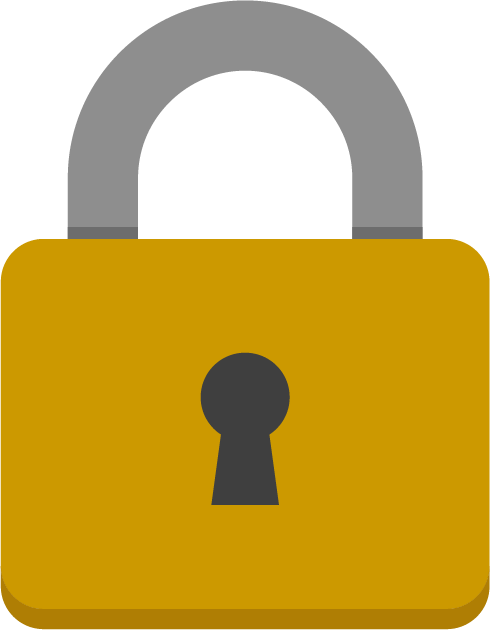14Sep 2022
Every aspect of running a business has changed dramatically with the rise of remote working. This new setting opens a lot of new challenges (as well as fixes others) for business owners and employees.
Of course, for those whose work is managing the people within a company, it means a complete 180 in the dynamics and strategies needed to keep doors open.
In this article, we want to explore more about these changes and how you can use remote working to your advantage in 2022 and beyond.
What is Human Resources (HR) for Remote Employees?
Although the dynamic of HR has fundamentally changed, tasks and responsibilities have not. HR is responsible for managing the journey of employees within a company.
From hiring and onboarding to training and career advancement, the human resources department will make sure that people are comfortable and engaged with their job, as well as ensure best practices are in place so the company and its employees can interact safely.
With that said, there’s been a complete shift in how these responsibilities are taken care of.
A quick example is the hiring process: because remote work has opened the doors for companies to work with talented professionals worldwide, there’s a need for better ways to find, qualify, and pick the right people from an expanding list of candidates.
This reality makes using scalable processes a necessity. Whether or not our system has matured enough to handle the challenge properly is another topic.
How Remote Work Impacted HR and Its Role
A lot of HR capabilities were affected by the remote-first work environment. However, we can break these changes into three main areas – without repeating ourselves about hiring:
1. Building Company Culture is Harder
According to Indeed, work culture “is a collection of attitudes, beliefs, and behaviors that make up the regular atmosphere in a work environment.” From a behavioral standpoint, it’s particularly HOW things are done in a company. Things like how communication is conducted, whether or not taking time off is valued, and how recognition is given count as work culture.
On the other hand, it’s also through work culture that companies share the WHY behind the employees’ jobs. This is important because it’s the precursor of teams’ “togetherness,” making the entire operation more productive, making people happier, and improving engagement between employees and their work.
However, remote working has made the togetherness the office once provided harder to recreate, as it’s more difficult to influence someone’s behavior through a screen.
Note: We’ll discuss recreating togetherness in a remote setting later in this article.
2. Keeping Employees Engagement Became the Top Priority
Companies with a weak culture will have a harder time engaging their employees, and HR teams across the globe have seen the effects.
According to Gallup, only “36% of U.S. employees are engaged in their work and workplace”. It means that about 64% of the entire workforce is completely disengaged from their company and duties.
In the same report, Gallup states that “Among actively disengaged workers in 2021, 74% are either actively looking for new employment or watching for openings.” This is making the competition for skilled professionals harder and decreasing talent retention rates.
In fact, in the 2021 Bureau of Labor Statistics report, “the overall turnover rate is 57.3%”.
Yes, there are many reasons for this to happen, but a crucial element to keep in mind is that remote work eliminates the symbolic value of “going to work”. It’s easier for employees to see their work more as a transaction than a calling.
3. More Reliance on Digital Tools
A distributed team means there are many more regulations and processes to keep in place. From documentation to payroll, every aspect of the HR role is now being turned into an application. Still, there’s nothing fundamentally wrong with that, as it makes the job more efficient.
However, it does mean HR professionals need to be more tech-savvy than ever before, adding a new layer of complexity to the role.
Just as an example, here are some of the tools you should consider when building your HR tech stack:
- Human resources information systems (HRIS) and human capital management (HCM) platforms like Bamboo HR.
- A payroll solution like Rippling.
- Compensation and benefits management software like ChartHop.
- Applicant tracking systems (ATS) like Lever.
And so on!
The 7 Main Remote HR Challenges and How to Solve Them
Just to make it clear, we love remote working! But if you thought otherwise, we wouldn’t blame you. While writing this article, we noticed there’s a lot of bias towards remote-first work. Nonetheless, as we stated before, remote work has created a lot of challenges, but it has also fixed many things.
People have better work-life balance and are creating meaning in their lives from other sources than their jobs, which makes for a more human-centric experience.
That said, HR’s job shouldn’t be recreating the same office experience. We’re not in the office! Instead, the new challenge for HR professionals is to create a virtual environment and culture that allows employees to produce their best work by adapting to our new reality.
Let’s explore these challenges and our proposition on how to handle them:
1. Lower Employee Engagement

As we’ve discussed, keeping employees engaged is a hard task to accomplish with a distributed workforce.
Some of the most common reasons organizations state for the lack of engagement are:
- Lack of work-from-home (WFH) infrastructure
- Distractions
- Isolation
For the latter, a recurrent example is water cooler conversations. However, these are quite simple to solve.
In terms of WFH infrastructure, it’s all about helping employees to invest in better equipment by providing a budget to buy a better chair and improve their home office, providing a laptop optimized to do the job, and providing them with the right software.
But what can we do about loneliness? Well, if we really want to bring back the “water cooler conversations”, the best way is to arrange some time for teammates to connect ON THE CLOCK and let them get to know each other.
For example, using a tool like Donut to connect employees with each other randomly can help build stronger relationships between colleagues and break the feeling of isolation.
If you really care about going the extra mile to keep your employees engaged, instead of forcing them to connect with what matters to you, help them connect to what they care about through you.
What do we mean? Solutions like Bright Funds easily connect employees with volunteering and donation opportunities (for example, if your employees make a donation, you can match it to show you support their cause). These gestures and experiences allow you to build a bond between your business and employees, thus improving worker engagement.
Combining these three actions will help you build a more remote-friendly company culture.
2. Tracking Productivity

Amid the COVID pandemic, there was a proliferation of tracking software, most of them with very polemic features like taking screenshots or even photos through employees’ webcams. Of course, it produced a lot of discomfort and increased turnover.
On the other hand, it’s also true that not tracking productivity properly makes it impossible for HR to provide accurate reports and causes HR to act on flawed data.
Although we don’t have a definitive answer for how to strike the right balance, there are a few things to put in place to help you keep workers happy while allowing you to get the data needed:
- You’ll need to trust your employees. If you can’t trust your team, then it reveals a clear flaw in the hiring process, and it needs to be corrected from the root.
- Create and document clear processes. Every task should have clear as possible steps to follow that employees can use to guide their work. As long as your employees rise to the level of your processes, everything will go right.
- Track the essentials. You need to define what’s the essential data you need. For marketing agencies, it can be the number of tasks done compared to the number of hours worked. For tech companies, it could be about the number of tickets, stories done per sprint, etc. Tracking things like keystrokes will provide data, but are those the numbers that move the business forward?
3. Onboarding Challenges

Without the proper onboarding, new hires can feel disconnected from the company and hesitate to collaborate with their peers or look for help from leaders or more experienced teammates.
These can become a huge problem for fast pacing companies that hire many new employees per month.
However, there are many systems you can put in place to help them get used to their new role and environment.
First, create proper communication channels for them to reach out to others. Things like Slack channels specific to getting help, weekly check-ins, and introducing new employees to their teammates in 1:1 meetings can help break the ice faster.
But what about training? People are used to using digital resources to learn new things. Take advantage of this and create a library of video training to teach employees where to find resources, reach out to managers and leaders, do certain tasks, and so on.
This automated method will save you a lot of time and provide a resource they can watch as many times as they need.
Lastly, build an onboarding roadmap for the first month of every hire. This will ensure that you hit every essential aspect of their work, providing reassurance to the new hire.
4. Employee Recognition and Visibility

Visibility is a big problem for remote workers. A lot of business owners and leaders are used to the idea of “seeing them work”. But this is more of a technicality than a real problem.
Even in-person employees have a hard time getting noticed in many settings. Still, how can we solve this for remote employees?
First, do 1 on 1 meetings with your employees once a month or every quarter. Talk to them about their work and aspirations, and take note of their biggest accomplishments.
In this new reality, HR professionals need to find those exceptional employees and ensure they’re being seen by stakeholders and leaders.
Second, create recognition programs based on the essential metrics of their roles. This can help you automate some systems to create shoutouts or incentives for high performers, even though you’re not manually making them.
5. Managing Sensitive Data

Lastly, HR manages a lot of sensitive information that can negatively affect the business and employees if managed incorrectly. Documents like contracts, NDAs, and business records can be tricky to manage without the proper systems.
To make things worse, a lot of documentation is still on paper, which for large companies would be almost impossible to migrate to digital. That’s exactly why we’ve built DOCUdavit.
With our solutions, you can scan and manage all paper documentation in record time, easing the process of finding, collecting, and migrating documents to a digital format.
Here are some of the benefits of using our human resource document management system:
- Expedited contract access, review, and approvals
- Stronger records management
- Improved compliance
- Supports legal matters
- More control
Going paperless is the best way to support your business documentation and protect sensitive data from getting lost or misplaced.
Wrapping Up
The workforce has changed, and HR needs to evolve to accommodate the new reality. Many remote HR issues come from trying to replicate the office feeling or culture. Instead, adapt your workflow to how your employees do things, and you’ll see a spike in productivity, satisfaction, and talent retention.
Even more important, you’ll need to have systems in place to help your employees reduce errors, find the help and support they need, and give them the freedom necessary to produce their best work.
In summary, the best starting point is for managers to keep their doors open, talk to their teams and find common ground in their conversations. If you find what matters to them, you’ll be able to build a new culture suited for your specific workforce. You’ll see higher productivity and satisfaction rates in no time.


1 thought on “Managing Remote Employees: How Remote Work Changed HR Forever”
Comments are closed.